FORT BRAGG, North Carolina — Certified parachute test jumpers here finished 23 risk reduction jumps with the T-11R Single Pin Troop reserve parachute, making sure it works as it should during equipment test jumps.
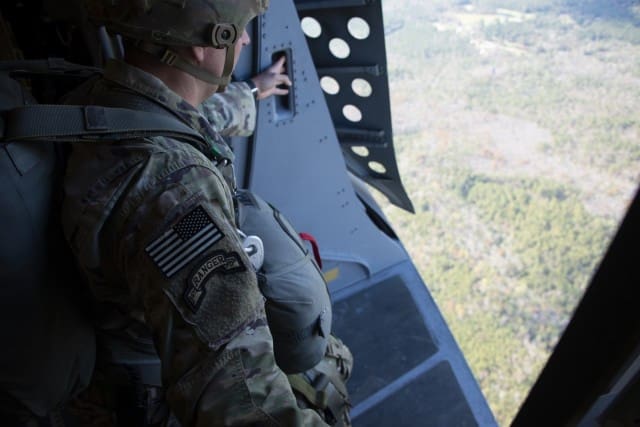
The Airborne and Special Operations Test Directorate (ABNSOTD) tested the chute from both rotary winged and fixed winged high performance aircraft to eliminate the potential for premature reserve activations.
Any necessary changes were made to address the previous version’s premature activation thought to be caused by wind blast, according to Lt. Col. Derek Johnson Chief, Test Division at ABNSOTD.
“Testing promotes and delivers a safe, and more durable piece of equipment to the Warfighter,” said Johnson. “Soldiers relish in participating in day-to day testing. It ignites their enthusiasm to rig and load a piece of equipment which will ultimately serve our future Soldiers during combat missions.”
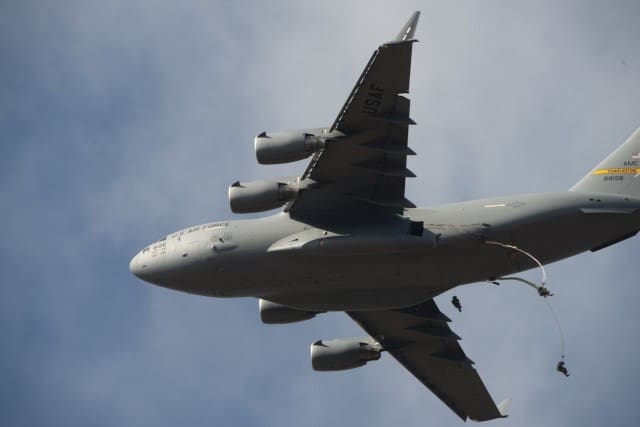
After the risk reduction jumps, ABNSOTD conducted 53 operational static line jumps during daylight hours to be fully certified by the Natick Soldier Research, Development, and Engineering Command located at Natick, Massachusetts.
While employing a host of risk reduction measures to ensure potential test items are safe and effective from the intended user’s standpoint, test events with the T-11R kicked off with new equipment training.
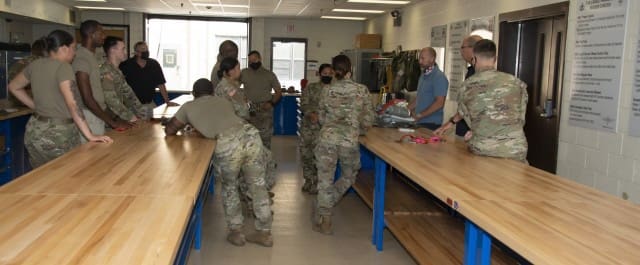
Parachute Riggers participated in New Equipment Training to learn the assembly of the chutes new components and closing of the pack tray.
“There is a huge increase in the amount of information that is provided to Soldiers who are given the opportunity to practice what they are learning in the form of hands-on training,” said Mrs. Shonda Strother, editor with ABNSOTD.
Testing new airborne equipment enables Soldiers the opportunity to provide feedback to the Army concerning current Soldiers needs in the field, according to Staff Sgt. Robert Whan, 2nd Battalion, 508th Parachute Infantry Regiment’s Battalion Air NCO.
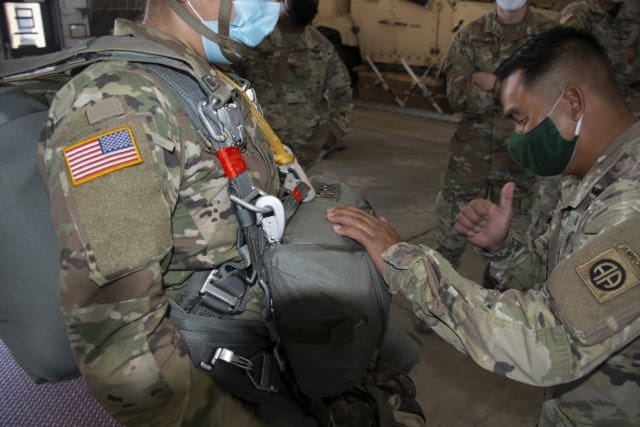
All airdrop test iterations were airdropped with Soldiers in full combat equipment as if they were jumping into a combat operation.
“The T-11R Single Pin reserve parachutes were then inspected for any damage in order to make sure they can hold up to the high demands of the airborne mission,” said Sgt. 1st Class Katherine Greene, ABNSOTD’s T-11R test noncommissioned in charge.
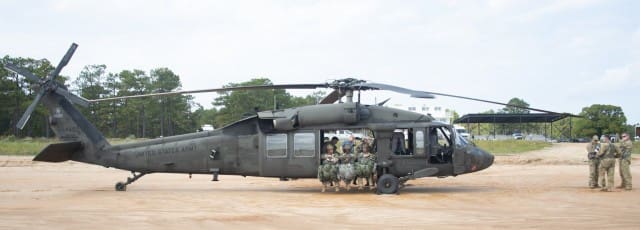
The new T-11R Single Pin pack tray is manufactured from the same materiel as the current issue item. The current T-11R version has a square shaped look while the redesign has a rectangle shape.
The re-designed pack tray includes a change where the reserve ripcord handle is now a single pin pull, and a change in the geometry of the reserve handle eliminates the risk of windblast.
A plastic viewing window also assists the jumpmaster when inspecting the curve pin during jumpmaster personnel inspection. The reserve handle remains a textile type.
Story by Mr. William Slaven, Airborne & Special Operations Test Directorate, U.S. Army Operational Test Command
Some of photos by Jim Finney, Airborne & Special Operations Test Directorate, U.S. Army Operational Test Command


When they’re testing these are they actually exiting the aircraft and then activating the reserve?
I’d love to see a picture of the new and old version of the retention system. The old system didn’t just activate from wind blasts, it would simply slide out of place by jarring the rig, the retention had almost no friction on it at times. I’ve seen them open during JMPI, while on the aircraft in flight (at night with a fully equipped combat jumper that’s a real treat when you’re the JM or safety).
Great that they got away from the old system, not sure why it took so long. I’ve been out for 5 years and the last time I performed duties was in 2014. That pin system on the mains and reserves back then was an abortion.